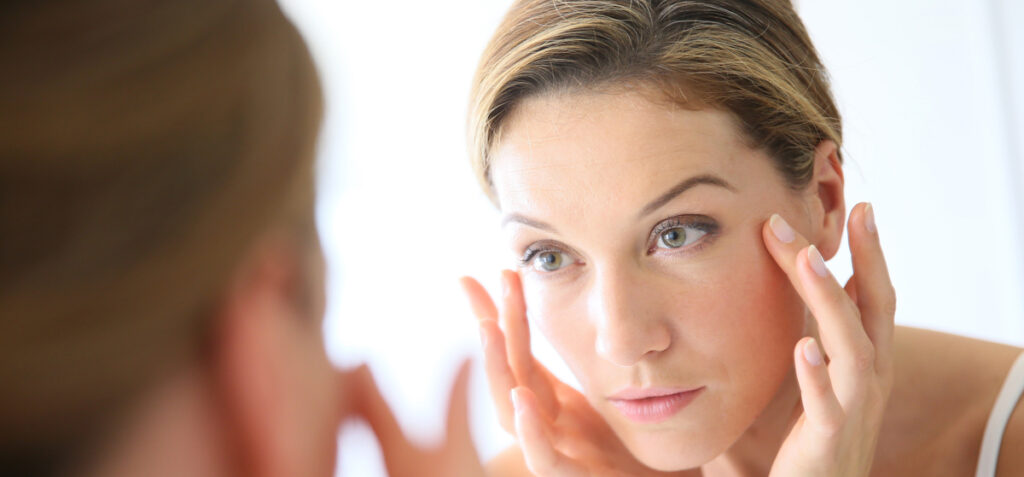Botox
Botox, short for Botulinum toxin, is a neurotoxic protein produced by the bacterium Clostridium botulinum. In its purified form, it has found various medical and cosmetic applications due to its ability to temporarily paralyze muscle activity.
Many people associate “Botox” with “aesthetics” in general as it has been used since 2002 and has a huge continued following due to its effectiveness and efficacy. However, it is just one of many procedures and medications used in aesthetics.
What CAN Botox do?
Reduce Wrinkles: Botox is most commonly known for its cosmetic use in reducing the appearance of wrinkles and fine lines on the face. It works by temporarily paralyzing the muscles responsible for causing wrinkles, such as those around the eyes (crow’s feet), forehead lines, and frown lines between the eyebrows.
Provide Temporary Results: The effects of Botox injections are not permanent but typically last for about three to six months, depending on various factors such as the individual’s metabolism, the area treated, and the dosage administered. Regular maintenance injections are often required to sustain the desired results.
Treat Medical Conditions: Botox has various medical applications beyond cosmetic use. It is used to treat conditions such as cervical dystonia (abnormal neck muscle contractions), blepharospasm (involuntary eyelid twitching), chronic migraines, hyperhidrosis (excessive sweating), and overactive bladder.
Prevent Migraines: Botox injections have been shown to be effective in preventing chronic migraines in some individuals. It is believed to work by blocking the release of certain chemicals involved in migraine pain transmission.

What CAN’T Botox do?
Treat All Types of Wrinkles: While Botox is effective in reducing wrinkles caused by muscle movement (dynamic wrinkles), it may not be as effective for wrinkles caused by sun damage, loss of skin elasticity, or volume loss (static wrinkles). Other cosmetic procedures such as micro-needling, PRP/PRF, PDO threads, and dermal fillers may be more suitable for these types of wrinkles.
Reverse Sagging Skin: Botox is not effective for treating significant skin sagging or laxity. It primarily targets muscle activity and does not address issues related to skin laxity or loss of collagen and elastin.
Provide Immediate or Permanent Results: While some improvement may be noticeable shortly after Botox injections, it typically takes several days to a week for the full effects to become apparent. Furthermore, the effects of Botox injections are temporary, and repeated treatments are necessary to maintain results. It does not provide permanent changes to the treated areas.
Address Underlying Causes: While Botox can help manage symptoms of certain medical conditions, it does not address the underlying causes of these conditions. It provides symptomatic relief rather than curing the condition itself.
Replace Surgical Procedures: While Botox can provide noticeable improvements in the appearance of wrinkles and certain medical conditions, it is not a substitute for surgical procedures such as facelifts or eyelid surgery in cases where more significant rejuvenation or correction is desired.

How is Botox administered?
Procedure: Botox injections are typically performed in a doctor’s office or medical spa setting. The procedure is relatively quick and minimally invasive, with no need for anesthesia. The toxin is injected into targeted muscles using a fine needle.
Safety: When administered by trained professionals, Botox injections are generally safe. However, like any medical procedure, there are potential risks and side effects, including bruising, swelling, pain at the injection site, headache, and temporary muscle weakness. In rare cases, more serious complications such as drooping eyelids or eyebrows, difficulty swallowing or breathing, and allergic reactions may occur.
Are there alternatives to Botox?
Alternatives: In addition to Botox, there are other neurotoxin-based injectables on the market, such as Dysport and Xeomin, which work similarly to Botox but may have slightly different properties and durations of action. Additionally, there are many cosmetic procedures than can be used in conjunction with Botox injections to both augment it’s effects and treat additional concerns not addressed with neurotoxin alone.
If you are looking for the best Botox treatments in Greenville, SC, as well as synergistic and effective aesthetics to go along with this, give us a call and schedule your free consultation today!
